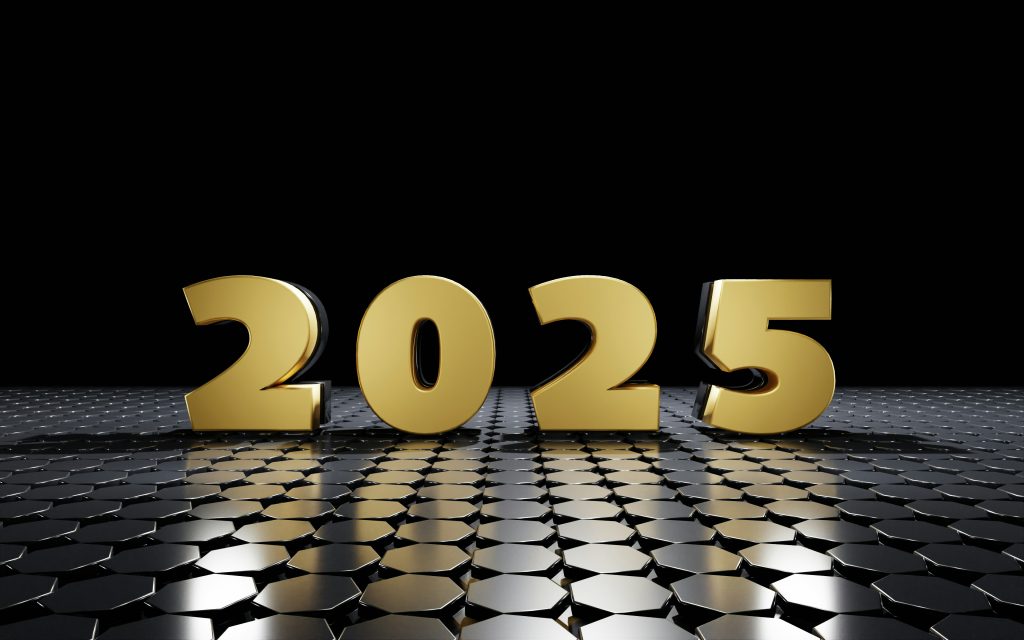New Year, New Predictions, Same Goal: Authenticity

Welcome to 2025! No matter whether you’re a PR pro inside a corporation, a non-profit or an agency, you’re responsible for guiding your organization through a new world of marketing, PR and communications. Here are four predictions – relating to AI, media consumption habits, cross-functional comms alignment and crisis communications – and how to best prepare for the year ahead.
AI (And the need for human authenticity!)
The trends we saw in 2024 indicate AI will be integrated into every aspect of PR, revolutionizing how we work in 2025. Plus, the first wave of young professionals who grew up with generative AI – AKA AI-native PR pros – are joining the workforce.
In the era of AI, though, brand authenticity is crucial. Consumers expect transparency and genuine interactions with people which builds trust and loyalty. Additionally, disclosing the use of AI tools and AI-generated content allows brands to maintain authenticity while still benefiting from AI technologies.
The key is to use AI to handle the repetitive tasks so your team can focus on creativity and strategy, enhancing, not replacing, your brand’s voice. AI-driven tools go far beyond content creation and can support PR and social media tasks like:
- Automating content scheduling
- Monitoring trends
- Social listening
- Competitor research
- Data collection and analysis
- KPI reporting
- Responding to customer inquiries in real time
As communications professionals we always joke about not dealing with numbers, but (unfortunately) data analytics is a basic skill PR practitioners must possess. AI tools, though, can analyze data in real time allowing more opportunities to fine-tune your strategy.
skill PR practitioners must possess. AI tools, though, can analyze data in real time allowing more opportunities to fine-tune your strategy.
In 2025, data should be an influencer behind every PR plan strategy. Social media platforms are offering even deeper insights into user behavior, and knowing audiences better will help us as agencies craft more captivating narratives for our clients that are more impactful and will ultimately result in more meaningful engagement. It’s about understanding not just what is working but why it’s working.
Big shifts have already changed media, and social media, consumption – we need to adapt, too
Brands are diverting attention from top tier media to trade publications, nonprofit newsrooms, and owned media. Trophy hits – earned placements in top-tier national consumer publications – will continue to have declining authority, and influencers across more niche platforms like LinkedIn, Reddit, Substack and Medium will become even more crucial for brands, offering stronger content distribution across more impactful channels.
Email newsletters are also seeing quick growth in terms of subscribers and revenue. A survey from Storydoc found that 90% of Americans subscribe to at least one newsletter, and 74% said they subscribe to between one and 10. One major benefit to newsletters: they give creators and brands a direct, algorithm-free way to engage with people.
Social media consumption is on track to overtake linear TV by 2025. The average user spends nearly 2 1/2 hours per day on social media. But the way we’re using social media platforms is changing. One survey suggested 94.6% of internet users between 16 and 64 years old visited a social network site in the last month. In that same month, just 81.8% visited a search engine because users are finding products and researching brands through social media sites rather than through Google’s search bar.
Many audiences no longer view big-name celebrity influencers as authentic in 2025, either. This year, it’s all about micro-influencers – those with smaller (less than 99,000 followers) but highly engaged audiences. Niche influencers target a particular segment of the population with content related to a specific topic, hobby or industry. Build long-term partnerships with influencers who align with your brand values, even if their audience is smaller will lead to more meaningful, authentic engagements with your target customers.
 Authentic, human-focused storytelling is gaining ground as consumers tune out AI-generated messages that are generic or promotional. Audiences want useful, beneficial information they can use in their lives, and they want an emotional connection to a brand. They want to see that a brand is human and shares their values through genuine story telling.
Authentic, human-focused storytelling is gaining ground as consumers tune out AI-generated messages that are generic or promotional. Audiences want useful, beneficial information they can use in their lives, and they want an emotional connection to a brand. They want to see that a brand is human and shares their values through genuine story telling.
User-generated content (UGC) will continue to be one of the most powerful ways to build trust with your audience, too. In one survey, consumers were 2.4x more likely to rate a brand as authentic when they published UGC as opposed to brand-created content. Encouraging customers to share their own experiences with your products or services not only builds community but also adds an element of social proof that brands and products do what they say they do that no ad can replicate. This type of content leverages the power of storytelling to build a deeper connection with audiences. As people share their personal stories and experiences, they create a narrative that resonates more authentically.
As PR professionals, we have a role in bringing digital literacy – how to be a responsible news consumer and encourage responsible news consumption – to our clients. We’re living in a headline obsessed society, but headlines rarely communicate the full picture. Plus, AI tech is evolving quickly, and fake news and deep fakes are already seeping into the news cycle.
Cross-functional communications alignment is key to a successful PR strategy
The expectations of clients and the tactics it now takes to cut through the noise of both competitors and the media landscape means the definition of PR is farther beyond traditional press relations than ever before. Plus, PR and marketing budgets have seemingly been cut in recent years, and brands that relied on glitzy stunts, celebrity spokespeople, and large events and activations to attract attention will need to return to what PR does best: creating connections, building authentic credibility, and finding the unique, provocative, newsworthy angles that pique media interest.
We’re seeing a trend towards greater integration of PR with other business functions, including closer alignment of PR strategies with overall business objectives; and collaborative campaigns that span PR, marketing, sales, and customer experience with unified campaign messaging across all channels and touchpoints.
Crisis Mitigation and Management
In a time where social media amplifies everything, and a single social post can spark a global uproar, effective crisis management will be more critical than ever in 2025. A small mistake can snowball into a full-blown crisis if not handled properly. But, nearly 90% of social media users say that brands can regain their trust during a crisis by admitting the mistake and being transparent about the steps they’re taking to resolve the problem.
will be more critical than ever in 2025. A small mistake can snowball into a full-blown crisis if not handled properly. But, nearly 90% of social media users say that brands can regain their trust during a crisis by admitting the mistake and being transparent about the steps they’re taking to resolve the problem.
Prepare by developing a crisis management plan with rapid response protocols designed for the speed of social media. Have clear guidelines in place for who will respond, and how to respond, when things go wrong.
In summary, the shifting dynamics of public relations demand that we as PR professionals must not only adapt our own strategies but also serve as trusted advisors for our clients navigating the changes within modern marketing, PR, and communications. Building strong relationships and maintaining a forward-thinking approach are essential to thriving in this competitive and fast-paced environment. By staying ahead of trends in AI, evolving media consumption patterns, cross-functional communications and crisis management, we can position ourselves and our clients for success in an ever-changing industry landscape.


